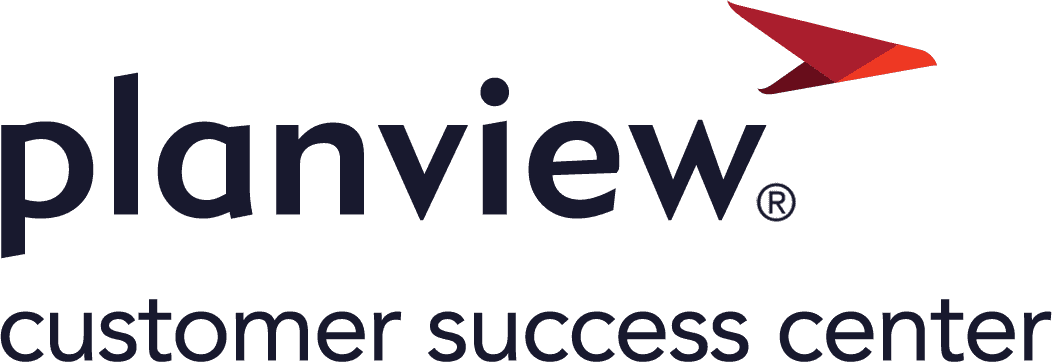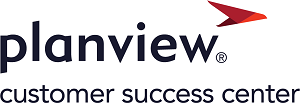Working with OKRs
- Last updated
- Save as PDF
OKRs Workflow
The following steps describe a general workflow you can use to work with objectives and key results (OKRs):
- Create one or more objectives for a high-level goal your organization wants to achieve.
- Create one or more key results for each objective to track the progress your organization makes toward completing each objective.
- Periodically update key results with the progress your organization makes.
- Review the overall progress using the Objectives and Key Results screen to monitor your OKRs.
- Adjust ongoing or future work by adding, modifying, and deleting objectives and updating, adding, modifying, and deleting key results as needed.
- Complete all objectives.
The following sections explain the ways you can monitor OKRs on the Objectives and Key Results screen.
Changing OKR settings on the screen
NOTE
To configure or change OKR levels, you must use Planview Admin. For more information, see Managing OKR Settings for Connected Products.
To change the OKR settings on the Objectives and Key Results screen:
-
Navigate to the Objectives and Key Results screen from AgilePlace or Planview Portfolios.
- In the menu bar at the top of the screen, click
 > OKR Settings.
> OKR Settings. - To set or change which OKR level is the primary level, click the Primary OKR Level list and select an option. The primary level always appears on the screen and is the default level when creating new objectives.
- To enable the OKR levels at which users can create new objectives, set or clear the OKR level options in the OKR Board Level Settings section as needed.
- Click Save & Close.
Viewing OKR health
On the Objectives and Key Results screen, you can click  to open or close the OKR Health pane. This pane shows the following information:
to open or close the OKR Health pane. This pane shows the following information:
- OKR progress: The progress of both objectives and key results (Ahead, Behind, or On Track).
- Key result updates: The number of key results updated in the last 7, 30, or 90 days.
- Activities for Key Results: The number of connected work items by status (Not Started, Started, or Finished).
NOTE
Calculations and progress numbers are based on the selected timeframe.
Click any of the non-zero numbers in the In Progress, Finished, or Progress Updated areas to highlight the corresponding OKRs in the main pane of the screen.
For details about how OKR progress is calculated, see OKR Health.
Sorting OKRs
You can set the internal left-to-right sort order within OKR rows on the Objectives and Key Results screen. The setting affects all rows on the screen.
To set the sort order within OKR rows:
-
Navigate to the Objectives and Key Results screen from AgilePlace or Planview Portfolios.
- Click
 .
. - Click one of the following options:
- Name: Sorts all OKRs within each row by name in alphabetical order.
- Start Date: Sorts all OKRs within each row by the start dates.
- End Date: Sorts all OKRs within each row by the end dates.
- If necessary, select Reverse Sort to reverse the sort direction (for example, starting with the most recent Start Date instead of the oldest Start Date) or clear Reverse Sort for the default sort direction.
Filtering OKRs
You can limit the number of OKRs shown on the Objectives and Key Results screen by using date, keyword, parent objective, child objective, owner, and custom attribute filters.
TIPS
- Click Clear filters to delete all filter criteria in all sections.
- Click
 in a filter section to delete filter criteria only in that section.
in a filter section to delete filter criteria only in that section.
To filter OKRs on the Objectives and Key Results screen:
-
Navigate to the Objectives and Key Results screen from AgilePlace or Planview Portfolios.
- Click
 .
. - Set the filter criteria you want to use in each section described in the following table.
Filter Section Description Date To filter by date, enter a date in one or both of the following boxes:
- From: Only show OKRs with a start date on or after the selected date.
- To: Only show OKRs with an end date on or before the selected date.
Keyword To filter by OKR name or another keyword, enter text in the Keyword box. The screen applies the filter in real time as you type. Parent Objectives To only show OKRs that are children of specific parent objectives, select the checkboxes for the parents you want. If all checkboxes are clear, the screen does not filter on any parent objective.
Child Objectives To only show specific child objectives and their associated key results, select the checkboxes for the child objectives you want. If all checkboxes are clear, the screen does not filter on any child objective. Owners To only show OKRs owned by specific users, select the checkboxes for the users you want. Custom attributes If you have custom attributes, each attribute also appears as a filter pane section with filter options for the attribute.
Setting the OKR timescale
To change the date range for OKRs shown on the Objectives and Key Results screen:
-
Navigate to the Objectives and Key Results screen from AgilePlace or Planview Portfolios.
- Click
 .
. - Select one of the following options:
- To show OKRs for one calendar year, click Year. Then click the box next to this option to select the year.
- To show OKRs for one calendar month, click Month. Then click the box next to this option to select the month and year.
- To show OKRs for a custom date range, click Custom. Then click the two boxes next to this option to select the start and end dates of the date range.
Viewing OKR levels
Each OKR level (Enterprise, Portfolio, Program, or Team) can appear in a section on the Objectives and Key Results screen. Each OKR level section has one Objectives row and one Key Results row. You can control the number of rows shown on the screen by showing or hiding OKR levels.
To show or hide OKR levels:
-
Navigate to the Objectives and Key Results screen from AgilePlace or Planview Portfolios.
- Click
 .
. - Select or clear the options in the Show OKR Levels list to show or hide each OKR level.
NOTE
The primary OKR level always appears on the screen.
Viewing OKR relationship lines
You can show or hide relationship lines that link parent OKRs and child OKRs by clicking  on the Objectives and Key Results screen. Solid lines show connected objectives and key results, while dashed lines link parent objectives and their child objectives.
on the Objectives and Key Results screen. Solid lines show connected objectives and key results, while dashed lines link parent objectives and their child objectives.
To manage OKR relationships, see Managing relationships for OKRs.
Viewing the history for an OKR
You can view the activity stream for individual OKRs, which shows a timestamped history that lists the creation details for the OKR as well as each update made to the OKR.
To view the history for an OKR:
-
Navigate to the Objectives and Key Results screen from AgilePlace or Planview Portfolios.
- Click an objective or key result to open it.
- Click History in the left pane.
Exporting OKR data
To export OKR data:
-
Navigate to the Objectives and Key Results screen from AgilePlace or Planview Portfolios.
- Click
 > Download OKRs as Excel.
> Download OKRs as Excel. - Navigate to the directory you want, enter the filename you want, and click Save.

